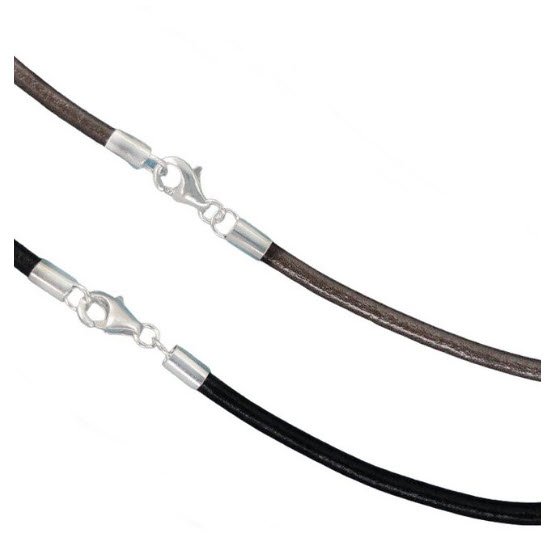A Brief History of Necklaces: How They Became a Fashion Staple
Necklaces, transcending mere adornment, have etched their presence in the annals of fashion and culture globally. From ancient civilizations to modern runways, these elegant pieces of jewelry have been symbols of status, expressions of individuality, and bearers of cultural heritage. Argentina, with its rich tapestry of cultural influences, offers a unique lens through which the story of necklaces unfolds. In this exploration, we delve into the fascinating journey of necklaces as a global fashion staple, with a special emphasis on the distinctive flair of Argentine jewelry. As a beacon of authenticity in this realm, Pieces of Argentina emerges as a treasure trove, offering an exquisite array of necklaces that embody the spirit and craftsmanship of Argentine artistry. Join us as we unravel the threads of history and style that have woven necklaces into the fabric of fashion, both globally and in the vibrant heart of Argentina.
The Origins of Necklaces
The history of necklaces spans back thousands of years, touching virtually every culture on the globe. In ancient Egypt, necklaces were adorned with gold and precious stones, symbolizing wealth and status. In contrast, the Romans valued pearls as a sign of prestige. Indigenous cultures around the world, from Native Americans to African tribes, utilized natural materials like bones, teeth, and shells, imbuing their necklaces with spiritual and social significance.
In Argentina, the necklace has its own unique story. The indigenous peoples, including the Mapuche and the Diaguita, crafted necklaces from a blend of natural elements and Spanish influences. These early necklaces often featured silver, a metal abundant in the region and central to Argentine jewelry-making tradition. The Spanish conquest introduced European styles and techniques, leading to a fusion that laid the foundation for Argentina's distinctive approach to jewelry.
As Argentina evolved, so did its necklaces. The 19th and early 20th centuries saw a blend of indigenous and European influences, with silver remaining a dominant material. This era marked the integration of intricate designs, such as filigree work, reflecting the country's diverse cultural heritage.
Today, necklaces in Argentina are not just fashion statements but also reflect the nation's rich history and multicultural roots. They serve as a testament to the country's journey from the ancient traditions of its indigenous people to the modern fusion of global influences.
Necklaces Through the Ages
The evolution of necklace styles and materials is a fascinating journey through time and cultures. From the dawn of civilization, necklaces have been crafted from materials as varied as stone, bone, shells, and later, metals and precious gems. Each era brought its own trends; the elaborate gold necklaces of the Egyptians, the pearl and gemstone chokers of the Renaissance, and the intricate art deco designs of the 20th century.
In this rich history, Argentina carved its niche with a distinctive blend of indigenous and European influences. Argentine necklaces, known for their exceptional silverwork, often incorporate native motifs and techniques. The traditional 'gaucho' style, with its intricate silver filigree and bold designs, is a testament to the country’s cultural fusion. These unique Argentine elements have gradually influenced global trends, especially in the realm of silver jewelry.
The 20th century witnessed an increased appreciation for Argentine necklaces on the world stage. The combination of traditional craftsmanship and modern design sensibilities made Argentine necklaces appealing to a global audience. Designers in Buenos Aires and beyond began experimenting with contemporary styles while retaining the essence of traditional Argentine motifs, further integrating Argentine jewelry into the global fashion lexicon.
Today, Argentine necklaces continue to influence global trends, celebrated for their quality, craftsmanship, and unique cultural heritage. They represent a harmonious blend of the past and the present, continuously evolving while honoring their rich history.
Focus on Argentine Jewelry
Argentine jewelry, with its distinctive blend of indigenous and European influences, stands out in the global arena for its unique craftsmanship and design. Central to this tradition is the use of silver, a material deeply rooted in Argentina's cultural and historical narrative. This tradition is vividly embodied in the collection available at Pieces of Argentina, where each piece tells a story of heritage and artistry.
A prime example is the "6mm Extra Heavy Hand Braided, Solid Sterling Silver & 18kt Gold Unisex Neck Chain" (MJ-RON125-R). This piece exemplifies the skilled craftsmanship inherent in Argentine jewelry. The intricate hand braiding, combined with the luxuriousness of solid sterling silver and 18kt gold, showcases a blend of traditional techniques and modern aesthetics. The neck chain is a testament to the meticulous attention to detail and the high quality that Argentine jewelry is renowned for.
These necklaces are not just accessories; they are a celebration of Argentina's rich history, encapsulating centuries of cultural exchange and artistic evolution. Pieces from
Argentina stand as more than mere ornaments; they are heirlooms and works of art, bridging the past with the present.
Modern Necklaces and Argentine Influence
The contemporary jewelry landscape is marked by a fusion of tradition and innovation, where necklaces have evolved to reflect modern sensibilities while retaining their historical significance. This global trend is mirrored in Argentine jewelry, which seamlessly blends traditional motifs with contemporary designs.
A perfect illustration of this blend is the "Solid Sterling Silver with 18kt Gold Accented, 3mm or 4mm Almond Link Neck Chain" (DRA105 or DRA125 Models) available at Pieces of Argentina. These necklaces represent the modern evolution of Argentine jewelry, featuring classic link designs with a touch of 18kt gold accents, symbolizing the harmonious fusion of old and new. They are crafted to cater to contemporary tastes while preserving the essence of traditional Argentine artistry.
These necklaces exemplify how Argentine jewelry has influenced modern necklace trends, offering unique designs that resonate globally. The influence of Argentine aesthetics in today's jewelry world is a testament to the country's ability to adapt its rich heritage to contemporary fashion demands, creating pieces that are both timeless and trendy.
The Cultural Significance of Necklaces in Argentina
In Argentina, necklaces are more than just ornaments; they are deeply embedded in the cultural fabric of the nation. These pieces are often showcased in traditional festivals and ceremonies, where they represent a rich tapestry of Argentine history and identity. The designs often reflect the nation's diverse cultural influences, from indigenous roots to European elements.
An exemplary piece that captures this cultural essence is the "Solid Sterling Silver Polo Mallet Lariat Necklace" (CB-N1126/59) from Pieces of Argentina. This necklace, with its polo mallet design, is a nod to the country's renowned equestrian heritage. Polo, a sport deeply ingrained in Argentine culture, is elegantly represented in this piece, making it not just a fashion item but a symbol of national pride and tradition.
Showcasing Pieces of Argentina's Collection
Pieces of Argentina offers a captivating collection of necklaces that embody the heart of Argentine craftsmanship. Two standout pieces highlight the diversity and skill inherent in their range.
The "100% Genuine Argentinian Leather Choker" (EB-692) brings a unique flair to the collection. Crafted from rich, dark brown or black Argentinian leather, it exemplifies the fusion of traditional materials with contemporary design. This choker is a testament to Argentina's leatherworking heritage, renowned worldwide for its quality and elegance.
In contrast, the "Handmade Solid Sterling Silver & 18kt Gold Neck Chain Necklace" (O-CP06/60) showcases the intricate metalworking skills of Argentine artisans. This necklace, featuring a braided chain design, is a beautiful representation of the meticulous craftsmanship and attention to detail that Argentine jewelry is celebrated for.
Conclusion
As we have explored, necklaces are not merely accessories but pivotal elements in the tapestry of Argentine culture and fashion. They symbolize the rich history, diverse influences, and artistic heritage of Argentina. From traditional designs to modern interpretations, Argentine necklaces continue to evolve, reflecting the country's dynamic spirit. Their significance extends beyond aesthetic appeal, capturing the essence of Argentine identity and craftsmanship. The ongoing evolution of these pieces ensures that necklaces will remain an integral part of both Argentine culture and global fashion for years to come.





